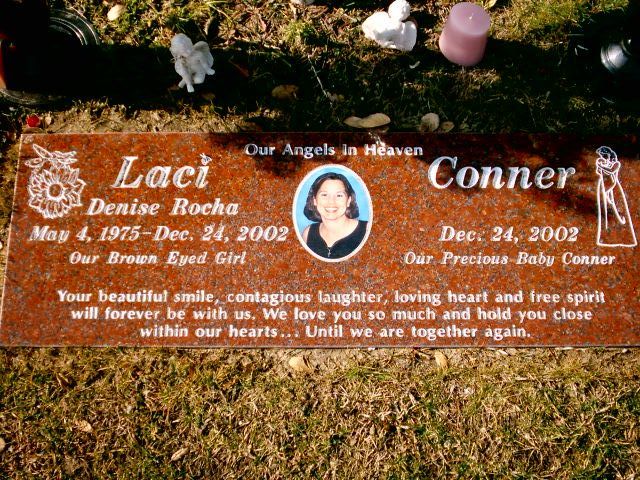
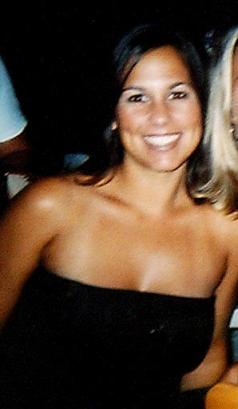
Laci Denise Peterson was born May 4, 1975, to Sharon Anderson and Dennis Robert Rocha, who had met in high school and owned a dairy farm west of Escalon, California. Laci worked on the farm from a young age and also enjoyed gardening with her mother. Sharon and Dennis divorced when Laci and her brother were young. Sharon and the children moved to Modesto, though the children visited the dairy farm on weekends. Sharon eventually married Ron Grantski, who helped raise Laci and Brent from the time Laci was two years old. Laci was a cheerleader in junior high and high school. After graduating from Thomas Downey High School, she attended California Polytechnic State University, majoring in ornamental horticulture.

Scott was born October 24, 1972, in San Diego, California, to Lee Arthur Peterson, who owned a crate-packaging company, and Jacqueline "Jackie" Helen Latham, who owned a boutique in La Jolla called The Put On. Lee and Jackie had six children from previous relationships. Scott was their only child together. As a child, Scott shared a bedroom with his half-brother John in the family's two-bedroom apartment in La Jolla.
He began playing golf at an early age, and, by age 14, he could beat his father at the game. For a time, Scott had dreams of becoming a professional golfer, and he was teammates with future-pro Phil Mickelson at the University of San Diego High School. By the end of high school, he was one of the top junior golfers in San Diego.
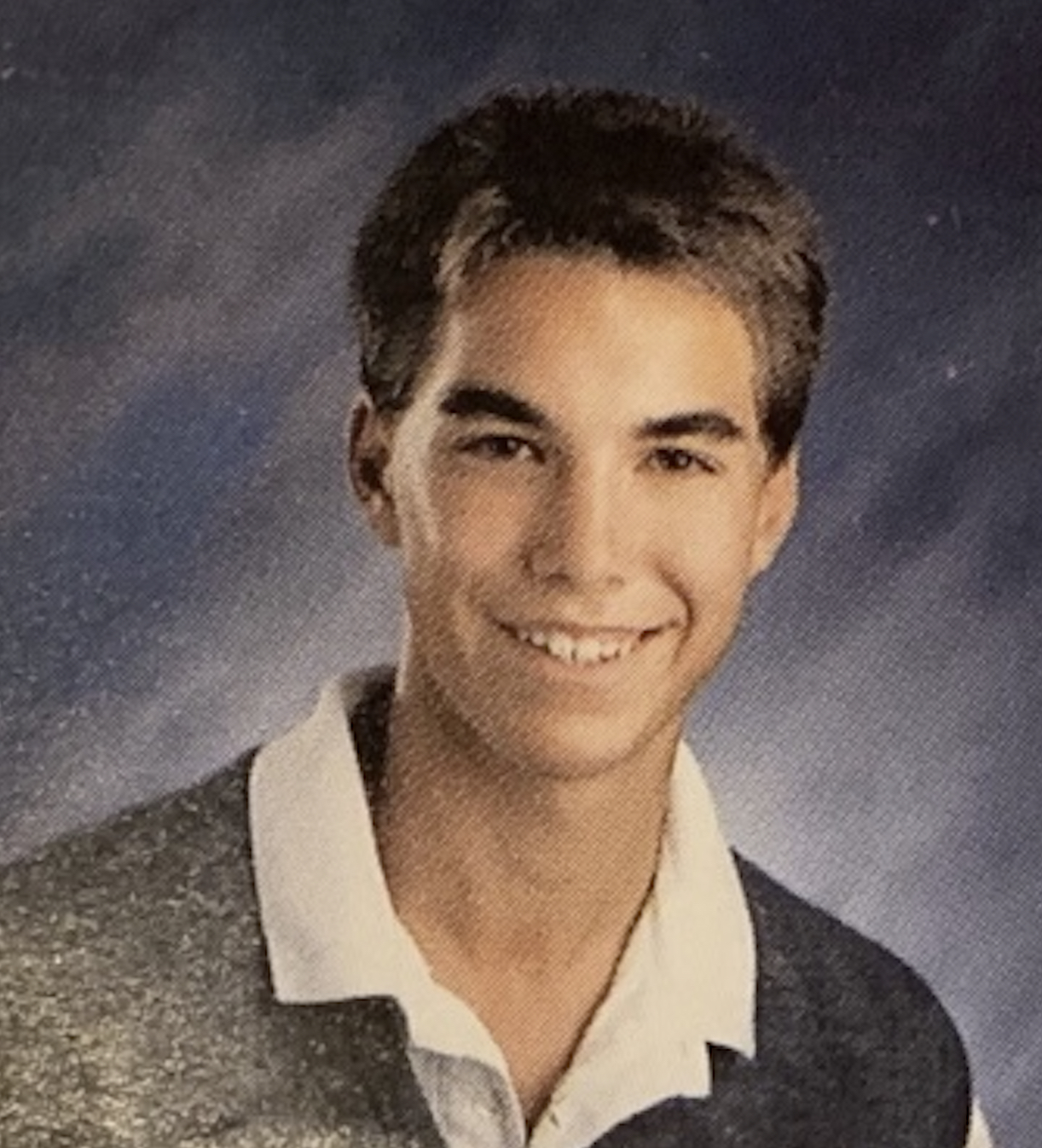
In 1990, Scott enrolled at Arizona State University (where Mickelson had also enrolled) on a partial golf scholarship. Scott's father, Lee, later testified that Scott was discouraged by the considerable competition that Mickelson and an unnamed future-pro presented. According to Chip Couch, the father of another young golfer, Chris Couch, Scott was taken off the golf team after Chip discovered that Scott had taken his son out drinking while Chris was visiting Arizona State for a recruiting trip. Chip complained to the Arizona State golf coach, who proceeded to kick Scott off the team. Scott transferred to Cuesta College and then to California Polytechnic State University. Initially planning to major in international business, Scott ultimately graduated with a degree in agricultural business. Professors who taught Scott described him as a model student. His agribusiness professor, Jim Ahern, recalled, "I wouldn't mind having a class full of Scott Petersons."
While at Cal Poly, Scott worked at Pacific Café, a restaurant in Morro Bay. Laci would occasionally visit the restaurant to see a friend who also worked there. In mid-1994, Laci gave Scott her phone number; she also told her mother that she had met the man that she would marry. Scott later called Laci, and they began dating. As the relationship grew more serious, Scott put aside his dreams of professional golf in order to focus on a business career.
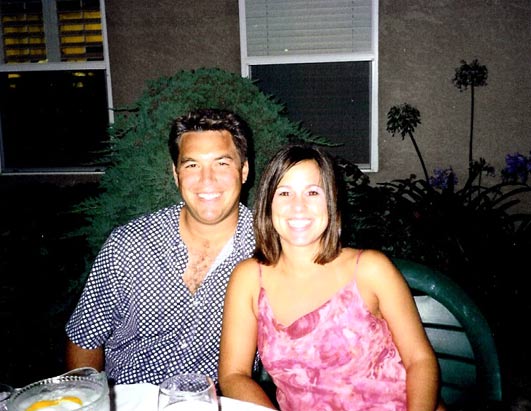
The couple dated for two years and eventually moved in together. In 1997, after Laci graduated, they married at Sycamore Mineral Springs Resort. While Scott finished his senior year, Laci took a job in nearby Prunedale. Prosecutors later stated that, around this time, Scott engaged in his first extramarital affair, though they did not reveal the details of the relationship. Scott graduated with a Bachelor of Science degree in agricultural business in June 1998, and the Petersons opened a sports bar in San Luis Obispo called The Shack. The Petersons decided to put The Shack up for sale when they moved to Laci's hometown of Modesto, California to start a family; they completed the sale in April 2001.
In October 2000, the Petersons purchased a three-bedroom, two-bath bungalow house for $177,000 on Covena Avenue in an upscale neighborhood near East La Loma Park. Laci took a part-time job as a substitute teacher, and Scott got a job with Tradecorp U.S.A., a newly founded subsidiary of a European fertilizer company, for which he earned a salary of $5,000 a month before taxes.
Laci's family, including her mother and younger sister, related that she devoted much of her energy towards being the perfect housewife, and that she enjoyed cooking, entertaining and watching Martha Stewart. In 2002, Laci discovered she was pregnant; her due date was February 10, 2003. The couple had planned to name their son Conner. In November 2002, Scott was introduced by a friend to Amber Frey, a Fresno massage therapist, and the two began a romantic relationship.
On December 23, 2002, at 5:45 p.m., Laci and Scott went to Salon Salon, the workplace of Laci's sister Amy Rocha, where Amy cut Scott's hair, as she did each month. Scott offered to pick up a fruit basket that Amy had ordered because he would be playing golf the next day at a course nearby the retailer. Prosecutors say Scott also told other people he would play golf on the day of Christmas Eve. Laci's mother, Sharon, spoke with Laci on the telephone around 8:30 that evening. The last three people known to have spoken to Laci before she disappeared were Amy, Sharon, and Scott.
Scott later told police that he last saw his wife about 9:30 a.m. on December 24, when he left to go fishing at the Berkeley Marina. He said Laci was watching a Martha Stewart show about meringue and preparing to mop the floor, bake cookies, and walk the family dog to a nearby park. Karen Servas, a neighbor of the Petersons, stated that she found the Petersons' dog, a golden retriever named McKenzie, alone outside the home and returned him to the Petersons' back yard at around 10:30 a.m. She later testified that she had found the dog at 10:18. Another neighbor, Mike Chiavetta, said he saw McKenzie at about 10:45 a.m., as he played catch with his own dog. The Modesto Bee also reported an unnamed female neighbor found the dog with a muddy leash, wandering in the neighborhood. That neighbor put the dog in the Petersons' yard, not observing that anything was out of place. At 2:15 p.m., Scott left a message for Laci, stating, "Hey, Beautiful. It's 2:15. I'm leaving Berkeley."
Scott said he returned home that afternoon finding Laci's car in the driveway and the house empty. He also stated that he found McKenzie in their back yard, and that he related this to Laci's mother, Sharon, though Sharon later denied this in her book. Scott showered and washed his clothes. A neighbor of Scott's later said that Scott had knocked on his door, asking if he had seen Laci. The neighbor and his wife both testified overhearing Scott saying that he had been golfing that day and had tried to call Laci. A relative of Laci's would also later testify that, when friends and family began gathering at the Peterson home that night, Scott said he had gone to play golf.
Scott called his mother-in-law, Sharon, to ask if Laci was with her; Sharon subsequently said that call was when she learned Laci was missing. Scott and Laci's stepfather both reported Laci missing. The police received the report of her disappearance shortly before 6pm. At the time of her disappearance, Laci was seven-and-a-half months pregnant, with a due date of February 10, 2003. The story attracted nationwide media interest.
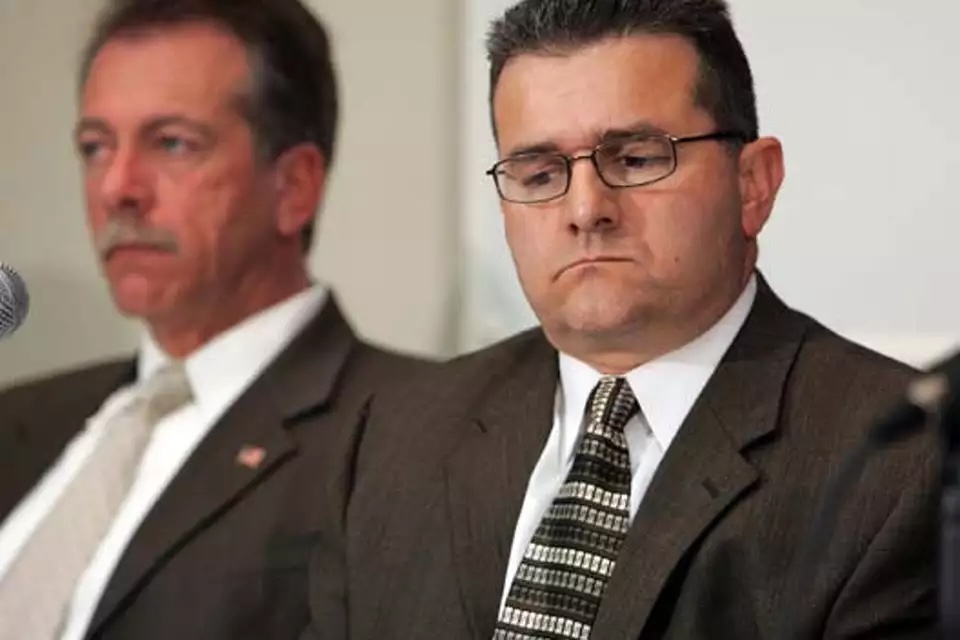
Modesto police detectives Allen Brocchini and Jon Buehler, the lead investigators on the case, responded to the missing-person call. When they arrived at the Peterson home, Laci's keys, wallet and sunglasses were found in her purse in a closet. Buehler told ABC News in 2017, "I suspected Scott when I first met him. Didn't mean he did it, but I was a little bit thrown off by his calm, cool demeanor and his lack of questioning... he wasn't, 'Will you call me back? Can I have one of your cards? What are you guys doing now?'" Buehler further described Scott's behavior as "a strange combination of polite and arrogant, disaffectedly distant and impatiently irritable. He just didn't seem like a man who was crushed or even greatly disturbed by his wife's disappearance and possible death."
After Scott told the police that he had gone to fish for sturgeon at the Berkeley Marina, about 90 miles from the couple's Modesto home, detectives launched a search. Though police later said they suspected foul play almost immediately, they did not treat the case as suspicious within the first few hours after the missing persons report was filed. During this period, Scott's in-laws defended him and portrayed him and Laci as the ideal couple, and public perception of Scott reflected this. As police continued to investigate, they grew more suspicious of Scott.
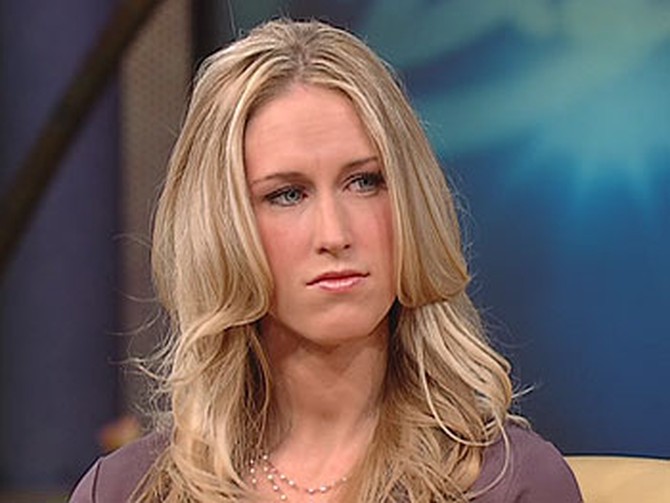
On January 17, 2003, it became known that Scott had engaged in two other extramarital affairs prior to his affair with Amber Frey. Frey informed police of their relationship on December 30, 2002, shortly after discovering he was a person of interest in Laci's disappearance. She told detectives that she met Scott on November 20, and that he had initially told her he was single. She also informed police that on December 9, two weeks before Laci's disappearance, Scott had told her that he was a widower and it would be the first Christmas without his wife. Police considered whether this was an indication that Scott had already decided to kill Laci. Frey agreed to phone him while police recorded her subsequent phone conversations with Scott in the hopes of getting him to confess.
On January 15, 2003, police told Laci's immediate family that Scott had been having an affair and showed Sharon and Ron a photo of Scott with Amber. Sharon indicated at this point that she believed Scott had killed Laci. On January 24, Sharon, Ron and Laci's brother, Brent, told reporters that they were withdrawing their support from Scott, though Scott had not officially been named as a suspect.
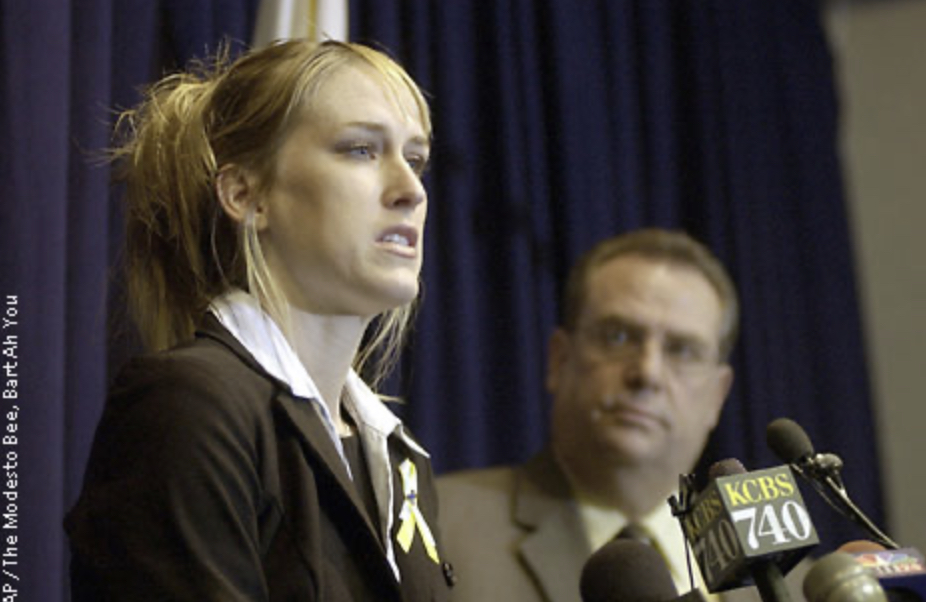
Hours later, Amber Frey held a press conference, in which she explained her role in the investigation. Ron Grantski would later testify that they did this upon learning of his affair with Frey, in particular upon seeing photos of the two of them together. A month after Laci's disappearance, her brother, Brent Rocha, stated at a press conference that Scott had admitted to him during a January 16, 2003, phone conversation that he had been having an affair with a woman from Fresno at the time, though Brent added that Scott was now no longer communicating with the Rocha family.
Modesto police and firefighters carried out an extensive search along Dry Creek the day after Laci's disappearance.
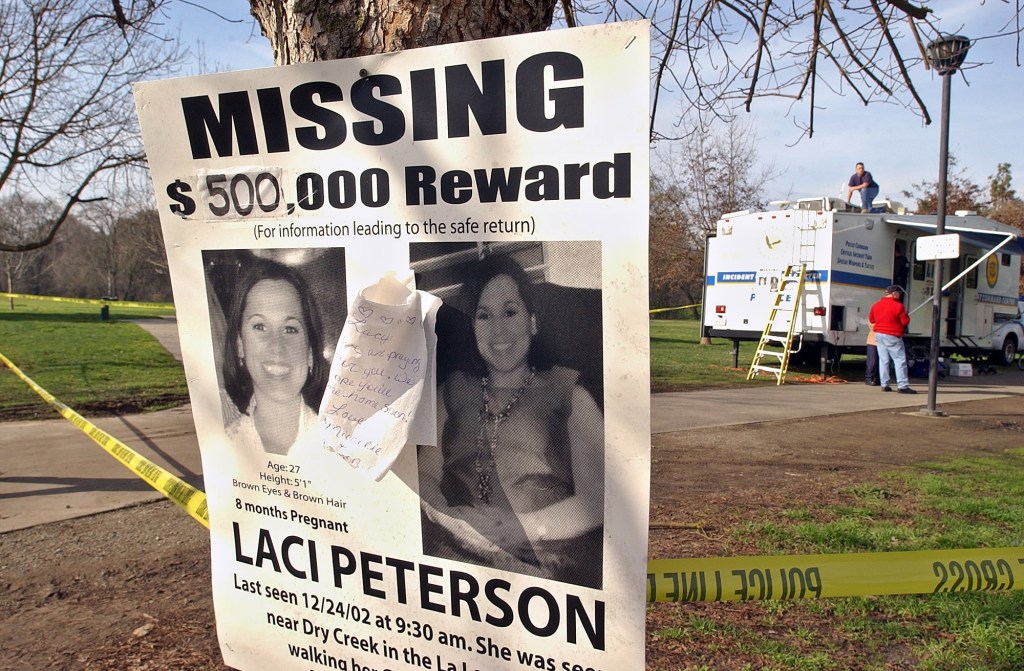
The search came to include helicopters equipped with searchlights, police mounted on horseback and bicycles, canine units, and water-rescue units on rafts. Thirty officers were involved in the search, as well as Laci's loved ones and volunteers, who posted fliers to raise awareness of her disappearance.
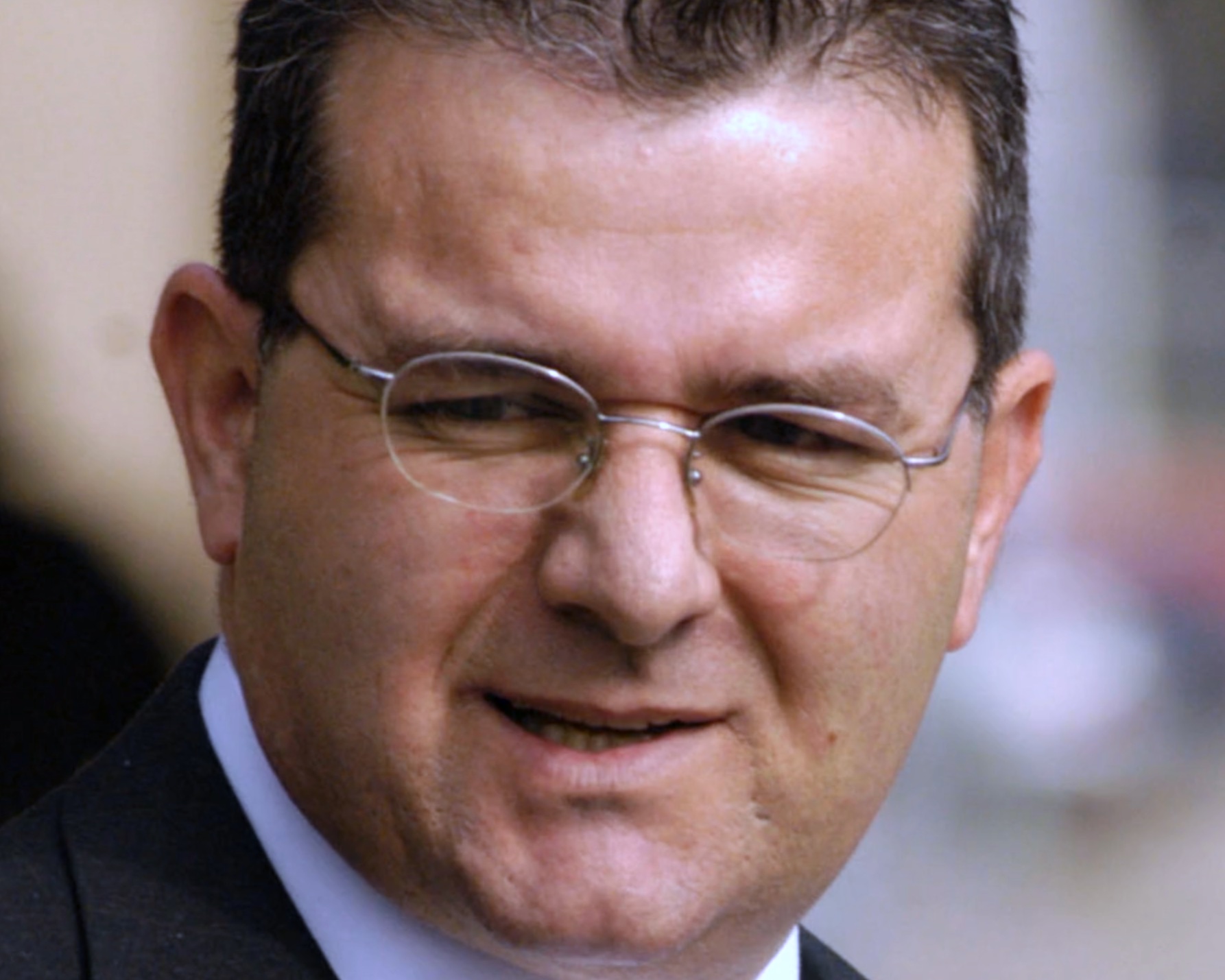
At a press conference, detective Al Brocchini said that police did not believe that Laci decided to leave without contacting her family, commenting, "That is completely out of character for her." The initial search and later vigil were organized by Laci's immediate family and friends. In the first two days, up to 900 people were involved in looking for Laci, before community officials or police directly participated in the search, and prior to significant media coverage. Eventually, the story attracted nationwide media interest.
A $25,000 reward was offered — later increased to $250,000 and, finally, to $500,000 — for any information leading to Laci's safe return. Posters, blue and yellow ribbons, and fliers were circulated, and the original, basic version of the LaciPeterson.com website was launched by the husband of one of her friends. Friends, family, and volunteers set up a command center at a nearby Red Lion Hotel to record developments and circulate information. Over 1,500 volunteers signed up to distribute information and to help search for her.
On April 13, 2003, a couple walking their dog found the decomposing body of a full-term male infant in a marshy area of the San Francisco Bay shore in Richmond's Point Isabel Regional Shoreline park. An April 24 ABC News report stated his umbilical cord was still attached, and the San Francisco Chronicle reported that it appeared torn, rather than cut or clamped, as is the normal practice following birth. However, ABC News later reported on May 30 that, according to the autopsy, neither the umbilical cord nor the placenta were found with the body.
One day later, a passerby found the body of a recently pregnant woman washed up on the eastern, rocky shoreline of the bay, one mile away from where the baby's body was found. The corpse was decomposed to the point of being almost unrecognizable as a human body. The body was missing the head and arms, including most of the legs. On April 18, 2003, the results of DNA tests verified that they were the bodies of Laci and her unborn son.
The autopsies on both bodies were performed by forensic pathologist Dr. Brian Peterson (no relation). The fetus's skin was not decomposed at all, though the right side of his body was mutilated. Although a judge sealed the autopsy results, an anonymous Associated Press source revealed that 1.5 loops of nylon tape were found around the fetus's neck and a significant cut was on the fetus's body. The exact date and cause of Laci's death were never determined. Her cervix was intact. She had suffered two cracked ribs, but Peterson, the pathologist, could not determine if this occurred before or after her death. Laci's upper torso had been emptied of internal organs except for the uterus, which protected the fetus, explaining the lower level of decomposition he experienced. Peterson concluded that the fetus had died in utero, and determined he had been expelled from Laci's decaying body, though when cross-examined in court, he conceded that he could not determine whether he had been born alive when this occurred. Peterson also found meconium in Conner's bowels, which is the first stool passed after birth.
The discovery of the bodies created a greater sense of urgency for Brocchini and Buehler, who had put a tracker on Scott's car. Knowing that he was in San Diego at the time, they feared he would escape across the border to Mexico. Brocchini commented in 2017, "I just thought, 'We've got to find Scott right now. He told me he was there and that's where the bodies come up? I mean, I believe it was premeditated, he planned it ... San Diego was pretty darn close to the Mexican border. Scott knew the area pretty well. That's where his parents lived. That's where he lived. So it wasn't like he was going to have to get on MapQuest to try and figure out a way to get to Tijuana."
The FBI and Modesto Police Department performed forensic searches of the Peterson home. The FBI also conducted mitochondrial DNA testing on a hair from pliers found in Scott's fishing boat that linked them with hairs recovered from Laci's hairbrush. The authorities also searched Scott's pickup truck, toolbox, warehouse, and boat. A homemade anchor was found in the boat that Scott had purchased two weeks earlier.

Scott told a detective that he made the anchor for the boat using a 90-pound bag of concrete, and used the rest of the bag to repair his driveway. Detective Henry Dodge Hendee testified that he found a cement-like substance on the wooden bed of a boat trailer when he searched Scott's warehouse on December 27. Hendee pointed to what he said were five circular areas on the trailer that had less powder than other areas on the trailer. He also found a dustpan surrounded by the white powder and a sledgehammer. Prosecutors believed that Scott made five anchors and used four of them to sink Laci's body in San Francisco Bay. After Scott was arrested, police conducted further searches in the bay in an attempt to locate the anchors, but nothing was found.
Scott was arrested on April 18, 2003, near a La Jolla golf course, where he said he was meeting his father and brother for a game of golf. His naturally dark brown hair had been dyed blond, and his Mercedes was "overstuffed" with miscellaneous items, including nearly $15,000 USD in cash, 12 Viagra tablets, survival gear, camping equipment, several changes of clothes, four cell phones, and two driver's licenses: his and his brother's. Scott's father, Lee Peterson, explained that Scott had used his brother's license the day before to get a San Diego resident discount at the golf course, and that Scott had been living out of his car because of the media attention. Police and prosecutors, however, saw these items as an indication that Scott had planned to flee to Mexico.
On April 21, 2003, Scott was arraigned in Stanislaus County Superior Court before Judge Nancy Ashley. He was charged with two felony counts of murder with premeditation and special circumstances. He pleaded not guilty. Judge Al Girolami of Stanislaus County Superior Court moved his trial to San Mateo County because of the concern so many people in Stanislaus had made up their minds about Scott's guilt.
Before his arraignment, Peterson had been represented by Kirk McAllister, a veteran criminal defense attorney from Modesto. Chief Deputy Public Defender Kent Faulkner was also assigned to the case. Peterson later indicated that he could afford a private attorney, Mark Geragos, who had done other high-profile criminal defense work. Scott's trial began on June 1, 2004, and was followed closely by the media. The lead prosecutor was Rick Distaso, while Geragos led Scott's defense. Prosecution witness Frey hired her own attorney, Gloria Allred, to represent her.
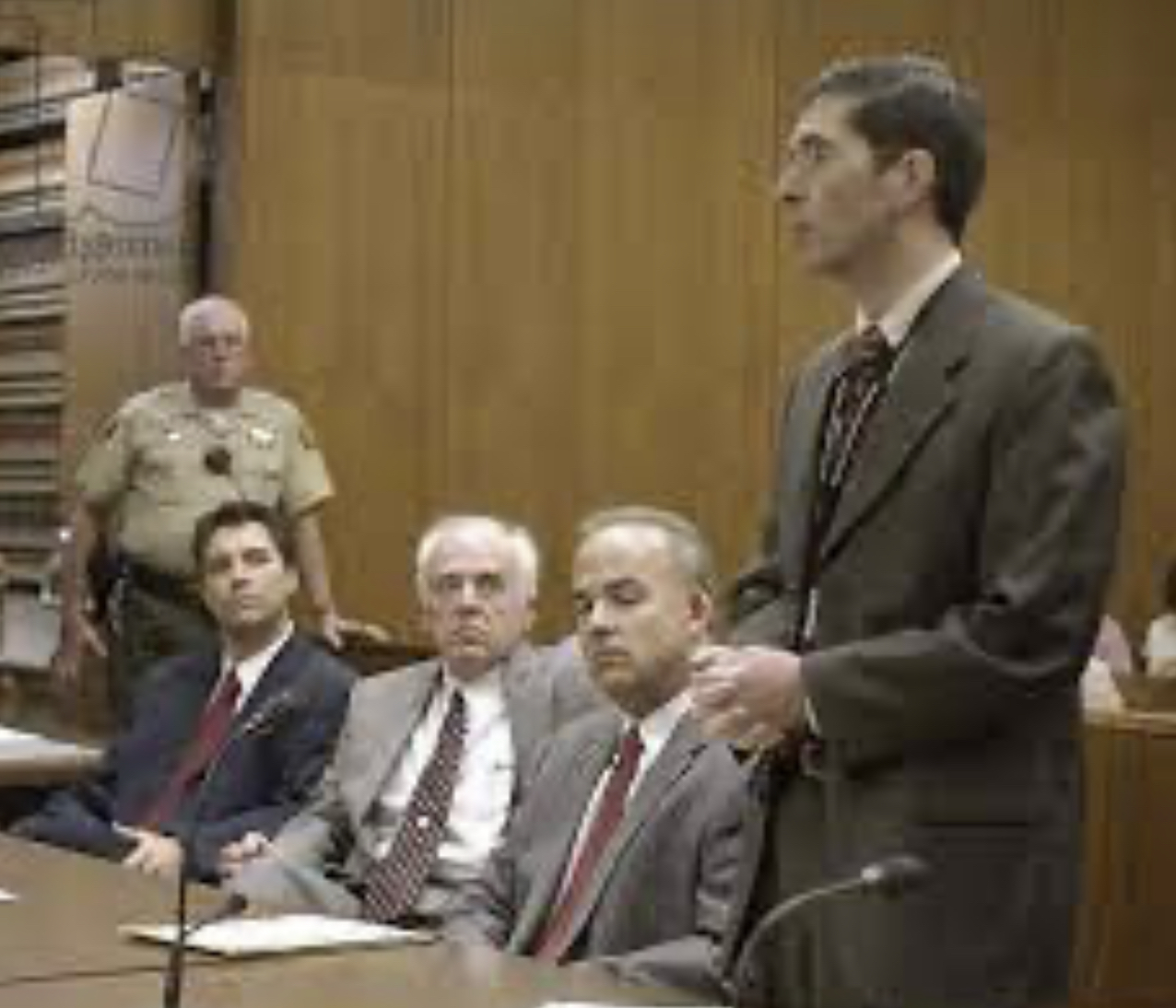
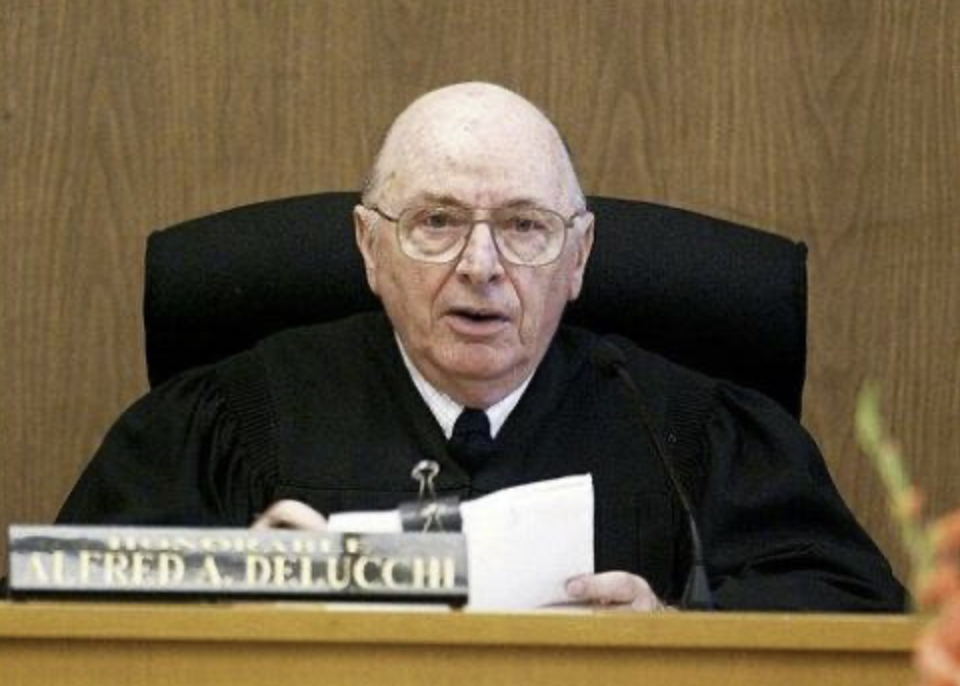
On June 23, 2004, one of the jurors was dismissed by Judge Alfred Delucchi after Delucchi spent two hours in his chambers questioning each of the jurors. Prior to Delucchi's June 21 interview, the aforementioned juror had been recorded on video speaking to Laci's brother, Brent Rocha. Delucchi had initially stated that this exchange had not warranted removal. He did not give a reason for the juror's later dismissal, although the transcript of Delucchi's session with him indicated that the juror had admitted that his girlfriend and others had spoken to him about news reports of his encounter with Rocha. Delucchi furthermore warned the remaining jurors not to read, watch, or listen to media coverage of the trial.
In opening statements, the prosecution said they would show that Scott had killed his wife because he was having an affair with Frey. The state chiefly detailed Scott's behavior in the days before and after his wife was reported missing, including telling others he had been golfing and asking police if they had used cadaver dogs to investigate the park in which Laci was supposed to have walked their dog. The defense conceded that Scott was "a cad" for cheating on Laci but ridiculed the prosecution's theory that Scott was going to "chuck this entire life he had" for a masseuse mistress he had taken on only four dates. Geragos said that the police had rushed to judgment, noting that the police had discredited Scott's claim that Laci was watching a segment of Martha Stewart Living on making meringues because, they stated, no meringue was mentioned on that program that morning, when in fact, a tape of that day's morning episode that Geragos played in court showed that the segment was about baking meringues. Finally, Geragos emphasized the prosecution's lack of forensic evidence and dismissed a hair of Laci's found in Scott's boat because Laci had visited the boat a few days before her disappearance.
Lacking direct evidence to link Scott to the crime, prosecutors chiefly relied on circumstantial evidence, pointing, in particular, to Scott's behavior before and after Laci's disappearance. Through various witnesses, the prosecution suggested Scott had several motives for killing Laci—that he was tired of his marriage, that he felt pressure from her pregnancy, that he wanted to continue his affair with Frey, and that he was under mounting financial pressure.
Sharon Rocha testified that when she went to East La Loma park to search for Laci, she saw Scott there, but she said Scott did not acknowledge her calling out to him and that he later "angl[ed] away" from her attempts to hug him and failed to attend a candlelight vigil. Two other relatives of Laci said Scott had shown little emotion during Laci's disappearance, and three witnesses testified that Scott had told them he had been golfing, not fishing, after Laci's disappearance. The prosecution called various witnesses to establish that Scott changed his appearance, purchased a vehicle using his mother's name, and added two pornographic television channels to his cable service days after his wife's disappearance. A realtor testified that, in January 2003, Scott expressed interest in selling the house he had shared with Laci, saying he did not want her to have to live in the home if found alive, and a car salesman testified that Scott had traded in Laci's Land Rover for a Dodge pick-up truck. Frey testified as to her affair with Scott, and the jury heard the secretly recorded telephone calls between the pair; in one, recorded after Laci disappeared, Scott falsely said he was in Paris. As to the Petersons' financial condition, an auditor testified for the prosecution that the couple had been living beyond their means and accumulated $23,000 in creditcard debt. During cross examination, the auditor also stated that Scott had paid all of his bills on time and had $20,000 of credit available on other cards.
Prosecution witness Rodney Oswalt said that neither of two hair follicles found on Scott's boat belonged to Scott, though he said he could not determine whether they belonged to Laci. Karen Korsberg, an FBI trace evidence expert, said she matched one of the hairs to a hair found in Laci's hairbrush through mitochondrial DNA tests. The prosecution further suggested that the hair must have come from Laci's dead body because she had not seen the boat while alive. Defense lawyers argued that mitochondrial testing was not a reliable means of DNA comparison —only half of states in the U.S. allowed the practice—and further contended that Laci had, in fact, been on the boat while alive. A witness reported that she had seen Laci at the warehouse with the boat the day before she was reported missing. On the stand, Detective Allen Brocchini explained that he had "excised" that witness's statement from his police report.
Prosecution witness Robert O'Neill was asked to comment on Scott's claim that he had used a 90-pound bag of cement to make a single anchor and pave his driveway. O'Neill said that the material in the anchor did not match a sample of concrete from the driveway because the driveway sample featured large, gravel-like chunks.
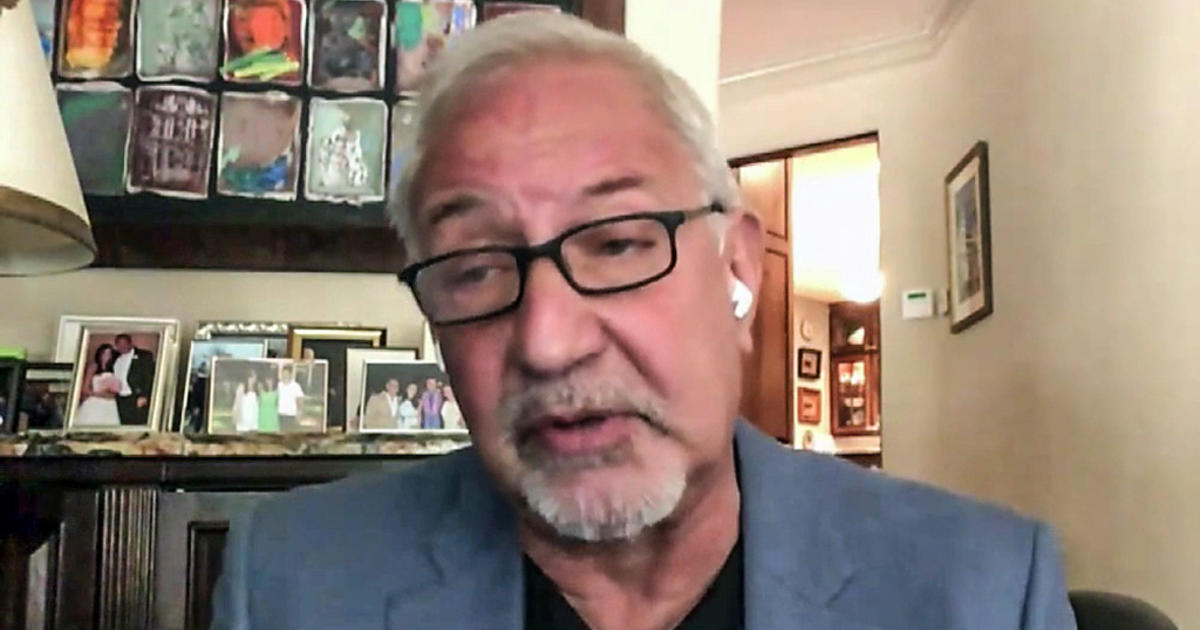
Conversely, for the defense, Steven Gabler, a concrete expert, testified that the samples were consistent. Gabler said that the gravel chunks had adhered to the driveway's concrete because the concrete was poured on top of those chunks. Scott's defense attorney, Mark Geragos, also pointed out that no such anchors were found after a search of the floor of San Francisco Bay with sonar equipment accurate enough to locate objects as small as a tin can. But Geoffrey Baehr, who helped lead over 15 diving expeditions off the Berkeley Marina to search for Laci, testified that thick mud, strong currents, dark waters, and a strong surge can make it "virtually impossible" for such equipment to locate an object, even when the target is known, and that this is why they did not find Laci's body or any anchors. To emphasize this point, Baehr related that when his crew accidentally dropped the underwater sonar device into the water, it took four diving trips to locate it, even though the crew knew precisely where it had landed.
Rick Cheng, a hydrologist with the United States Geological Survey and an expert witness on tides of the San Francisco Bay, testified for the prosecution and suggested that Laci may have been dumped near where Scott had said he was fishing. During crossexamination, Cheng admitted that his findings were "probable, not precise".
Scott's defense lawyers based their case on the lack of direct evidence, and played down the significance of circumstantial evidence. They also questioned whether the investigation was thorough, since Modesto police Detective Mike Hermos admitted he did not check the alibi of a prostitute who was accused of stealing checks from Scott's mailbox, but Hermos did not say the woman was ever a suspect, and prosecutor Dave Harris noted that the checks were stolen after Laci vanished, precluding the woman from involvement in her disappearance. A police community-service officer testified that the playback of an interview with Scott had no sound because no batteries had been placed in the tape recorder that was used to record it. Other detectives were called to testify about the extensive search for evidence.
The defense suggested the fetal remains were of a full-term infant and theorized that someone kidnapped Laci, held her until she gave birth and then dumped both bodies in the bay. The prosecution's medical experts contended that the baby was not full-term and died at the same time as his mother. As to this matter, Dr. Charles March, a fertility specialist, was expected to be a crucial witness for the defense. March said that the Petersons' unborn baby could not have died any earlier than December 29, 2002. Under cross-examination, March said he had based his finding on a report by one of Laci's friends, who said that Laci had told her that a June 9, 2002, at-home pregnancy test had produced a positive reading. But the prosecution criticized March for having relied on a friend's report. After prosecutors criticized March for a typo in his report, he remarked, "Cut me some slack." In response to the testimony, Stan Goldman, a criminal law professor at Loyola Law School in Los Angeles said, "There were moments today that reminded me of Chernobyl."
One juror was removed and replaced during deliberations due to misconduct, after she conducted independent research on the case. The jury foreman (also an attorney) requested his own removal, most likely because his fellow jurors wanted to replace him as foreman. Geragos told reporters that the foreman had mentioned threats he received when he requested to be removed from the jury. The foreman was replaced by an alternate.
On November 12, 2004, the jury convicted Scott of two counts of murder: first-degree murder with special circumstances for killing Laci, and second-degree murder for killing the fetus she carried. The penalty phase of the trial began on November 30, and concluded December 13, when the jury rendered a sentence of death. On March 16, Judge Delucchi followed the jury verdict, sentencing Scott to death by lethal injection and ordering him to pay $10,000 toward the cost of Laci's funeral, calling the murder of Laci "cruel, uncaring, heartless, and callous".
In later press appearances, members of the jury stated that they believed Scott's demeanor — specifically his lack of emotion and the phone calls to Frey in the days following Laci's disappearance — indicated his guilt. Juror No. 1, Greg Beratlis, and two other jurors, said they based their verdict on "hundreds of small 'puzzle pieces' of circumstantial evidence that came out during the trial, from the location of Laci's body to the myriad lies her husband told after her disappearance.
On October 21, 2005, a judge ruled that proceeds from a $250,000 life insurance policy Scott took out on Laci would go to Laci's mother, which was reaffirmed by the Fifth District Court of Appeal on October 31, 2007.
Scott arrived at San Quentin State Prison in the early morning hours of Wednesday, March 17, 2005. He was reported not to have slept the night before, being too "jazzed" to sleep.
Scott's automatic appeal of his death sentence was filed in the Supreme Court of California on July 5, 2012. The next day, Scott's attorney, Cliff Gardner, filed a 423- page brief contesting the sentence, arguing that publicity surrounding the trial, incorrect evidentiary rulings, and other mistakes deprived Scott of a fair trial. The State Attorney General's office filed their response brief on January 26, 2015. The defense filed a response to the State's brief in July 2015, claiming that a certified dog that detected Laci's scent at Berkeley Marina had failed two-thirds of tests with similar conditions.
In June 2020, the California Supreme Court heard arguments on Scott's direct appeal. The defense argued that prospective jurors were improperly excused; that the trial judge improperly allowed two jurors onto Scott's boat; that the judge erred in insisting the prosecution be present during defense testing of the boat; and that the motion to move the trial to another county should have been granted due to juror questionnaire results showing almost half of the prospective jurors had already concluded Scott was guilty prior to the trial. The prosecution countered that the California Supreme Court should overturn the verdict only if it were to find that a prospective juror was improperly dismissed, and that "there was 'no credible claim' that any of the 12 jurors who decided [Scott's] fate were unfair or partial."
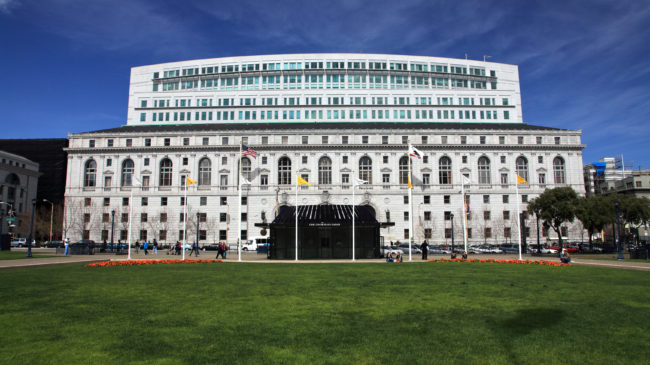
On August 24, 2020, in a 7–0 decision, the Supreme Court of California upheld Scott's conviction but overturned his death sentence, finding that Scott's trial judge had improperly dismissed jurors who opposed capital punishment without asking them whether they could put their views aside. Justice Leondra Kruger explained that, per Supreme Court rulings since 1968, "Jurors may not be excused merely for opposition to the death penalty, but only for views rendering them unable to fairly consider imposing that penalty in accordance with their oath. This is the meaning of the guarantee of an impartial jury." Prosecutors initially stated that they would retry the penalty phase, but subsequently reversed that decision in June 2021.
On September 22, 2021, California Superior Court Judge Anne-Christine Massullo ruled that Scott would be re-sentenced to life in prison without the possibility of parole. The following month, Massullo scheduled a hearing on that matter for December 8. On December 8, Massullo re-sentenced Scott to life in prison without the possibility of parole, for the first-degree murder of Laci, and a concurrent sentence of 15 years to life for the second-degree murder of Conner.
In October 2022, Scott was moved off San Quentin's death row, and transferred to Mule Creek State Prison in Ione, California.
In November 2015, Scott filed a habeas corpus petition. While the direct appeal could only challenge errors made by the trial judge, Scott's habeas petition could include new evidence. Amongst other bases for relief, Scott contended that a juror lied on her jury application and that there was evidence that neighbors saw Laci alive after Scott left home. On August 10, 2017, the State Attorney General filed a 150-page response arguing that the habeas petition ignored "overwhelming evidence" that Scott murdered Laci.
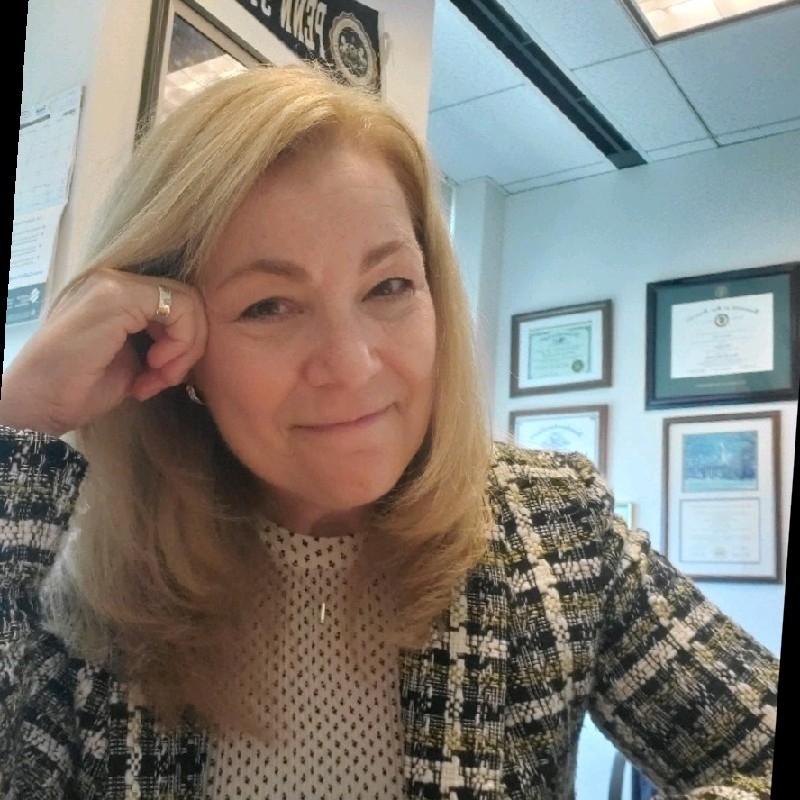
Supervising Deputy Attorney General Donna Provenzano discounted eyewitness spotting of Laci, saying that such sightings "were legion", while noting 74 reported sightings in 26 states and overseas, most of which she stated, were neither viable nor corroborated. In August 2018, Scott's legal team filed their reply, emphasizing six claims of "deficient performance" by trial attorney Mark Geragos, such as failing to call experts in fetal growth, dog scent, how bodies move in water, stating that he would call witnesses but failing to follow through, and failing to properly address burglary evidence.
In October 2020, the California Supreme Court, in response to the habeas petition, issued a show-cause order instructing the lower court to consider the question of juror misconduct.
On December 20, 2022, Judge Massullo denied Scott's habeas petition, which had been based, in part, on the allegation that a juror committed misconduct when she lied about her own history of domestic abuse during jury selection, which Scott stated had tainted the jury. Massullo concluded that there was no evidence to support this accusation, explaining that the juror did not intentionally conceal this information with the motive to stay on the jury, nor appeared vengeful toward Scott in letters she later wrote him in the prison. Massullo wrote, "The Court concludes that Juror No. 7's responses were not motivated by pre-existing or improper bias against [Scott], but instead were the result of a combination of good faith misunderstanding of the questions and sloppiness in answering." Scott still had the legal option of appealing her ruling.
Laci and Conner were buried at Burwood Cemetery on August 30, 2003. The death of Laci and Conner Peterson led to the passage of the Unborn Victims of Violence Act, which is also known as Laci and Conner's Law. On April 1, 2004, Sharon Rocha and her husband Ron Grantski were in attendance at the White House when President George W. Bush signed the bill into law. The Act provides that, under federal law, any person who causes death or injury to an unborn child while in the commission of a crime upon a pregnant woman will be charged with a separate offense.
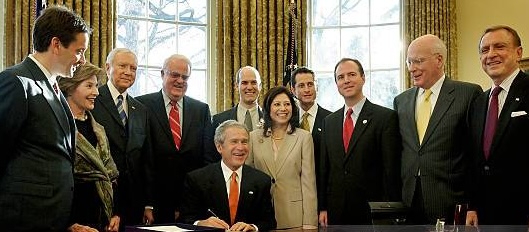
On October 21, 2005, Stanislaus County, California, Superior Court Judge Roger Beauchesne ruled that Scott was not entitled to collect on Laci's $250,000 life insurance policy, having been convicted of her murder. Under California state law, criminals may not profit from insurance policies. On December 19, 2005, the money was given to Laci’s mother, Sharon Rocha, as the executor of her estate. The California Fifth District Court of Appeals in Fresno later affirmed the trial court's decision on October 31, 2007.
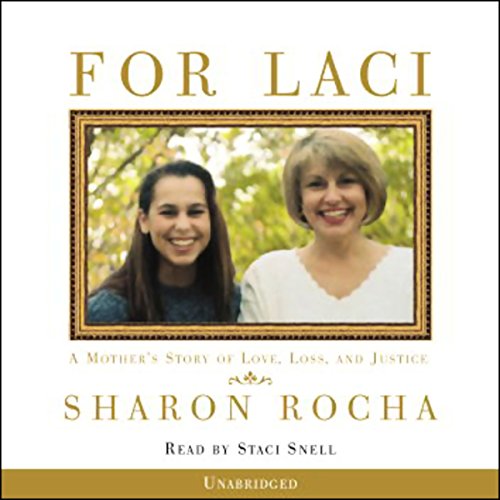
In 2006, Sharon wrote For Laci: A Mother's Story of Love, Loss, and Justice, a biography and memoir about Laci's life and death. All proceeds are used to fund the Laci and Conner Search and Rescue Fund, which she had founded. On January 29, 2006, it was listed at No. 1 on The New York Times Non- Fiction Best Seller list.
